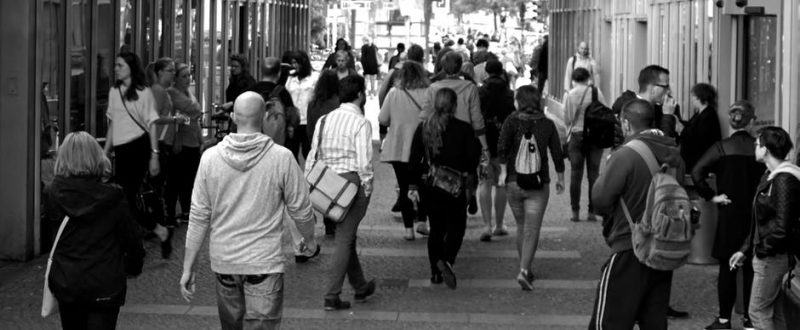Few were shocked back in July when a global study found Indonesia to be the country which walks the least. From shoddy sidewalks with gaping holes, impatient motorcyclists riding up the side of the roads and the stifling humidity, Jakarta can’t be called a city made for pedestrians. Urban sprawl and long commutes hardly help, with many Jakartans forced to spend hours a day in cars, buses or motorcycles in an effort get from work to home.
But with much of the world already experiencing rapid declines in health as lifestyles become more sedentary, the results are alarming for any expat who plans to spend part of their lives in Indonesia.
The study, conducted by Stanford University in the US, tracked the walking habits of almost 718,000 people across 111 countries via smartphones in an effort to better understand the impact walking has on overall health outcomes. Participants were monitored for 95 days each.
Indonesia came last in the 46 country ranking of those with over 1,000 participants with just 3,513 steps on average per day. This is well behind top ranking Hong Kong on 6,880 steps and China at 6,189. Singapore rates 5,674 steps on average a day.
Why does Indonesia rank so low?
A breakdown of data from within Indonesia is not yet available online, but the reasons for the results in major cities like Jakarta appear self-evident. Researchers cited a city’s ‘walkability,’ a sustainability concept which takes into account the infrastructure and environment in a neighbourhood or community, as a major factor in predicting how much participants walked.
Unsurprisingly, Jakarta ranks low. Walkability measures factors like access to green spaces, building density and transport connectivity – all factors in which Jakarta has made efforts to improve but is still lacking.
“In more walkable cities, activity is greater throughout the day and throughout the week, across age, gender and body mass index (BMI) groups, with the greatest increases in activity for females,” the survey said.
How beneficial is walking?
The benefits of walking are well documented – both for physical and mental health.
“Regular brisk walking can help you maintain a healthy weight, prevent or manage various conditions, including heart disease, high blood pressure and type 2 diabetes, strengthen your bones and muscles, improve your mood, balance and coordination,” the Mayo Clinic says. “The faster, farther and more frequently you walk, the greater the benefits.”
The Mayo Clinic notes the US Department of Health and Human Services guidelines, which recommend 150 minutes of moderate aerobic activity, 75 minutes of vigorous aerobic activity or a combination of both each week. Strength training of all the major muscle groups is also recommended twice a week at a minimum.
Each adult should aim for a minimum 30 minutes of activity a day, which can be split into ten or 15 minute sessions, the Mayo Clinic says.
While brisk walking helps in weight loss, it also has a multitude of mental health benefits. A study from California State University found that the more a person walked each day the better their mood. This is because exercise, even low impact exercise like walking, releases endorphins – painkilling hormones.
Additionally, regular exercise is believed to slow down the ageing process and keep people alert and high-functioning well into old age.
What can be done to improve walkability in Indonesia’s cities?
Jakarta’s infrastructure woes are a long-running story here in Indonesia, but efforts are being undertaken to improve accessibility. While these efforts tend to focus on public transport one civil group is acting in the interests of pedestrians.
Alfred Sitorus, the Chairman of the Jakarta Pedestrian Coalition, spoke to the New York Times in August about the group’s actions to keep the walkways for pedestrians only.
“As kids, we learn in school that sidewalks are for pedestrians, but as adults we think it’s okay,” Sitorus said about motorcycles using sidewalks.
The group often stages protests on Jakarta’s more busy streets holding signs and forming chains to block motorcycles from using the sidewalks. These efforts are often met with abuse from motorists, he said.
But for now?
Many of Jakarta’s hidden delights can be found deep in neighbourhoods and suburbs that can only be found with a little exploring. A Saturday spent exploring Glodok, Jakarta’s old Chinese-Indonesian neighbourhood, or the streets off Kota Tua, or the Old Town, will give even the slowest of walkers an increase in their weekly steps average.
Early risers can join in on Jakarta’s worst kept secret – the fun Sunday morning Car Free Day trek from Senayan to the Hotel Indonesia Roundabout, or even up to Monas, the National Monument, for those excited to see the pedometer tick over.
Spend an afternoon checking out the newly refurbished Kalijodo area in West Jakarta. Once one of the city’s most notorious red light districts, it now boasts a skate park and plenty of open space. Enjoyed by children and teenagers each weekend, a day spent at Kalijodo is an easy way to get your steps up while soaking up the festival-like atmosphere.
Featured Image Ingo Joseph/Flickr




